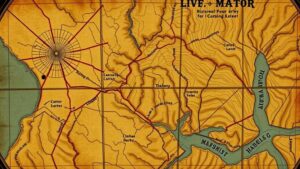Decoding Old Journals and Letters to Track Down Lost Treasure Locations
Decoding Old Journals and Letters to Track Down Lost Treasure Locations
The quest for lost treasures has captivated the imaginations of treasure hunters, historians, and adventure seekers alike. Many of these treasures are believed to be buried in locations documented in forgotten journals and letters from past explorers, pirates, and settlers. This article explores the methodologies for decoding these historical texts to identify potential treasure locations, supported by case studies and evidence from various renowned treasure hunts.
The Historical Context of Treasure Hunting
Treasure hunting dates back centuries and often involves the search for gold, jewels, or other valuable artifacts associated with historical events. For example, the legendary treasure of the Spanish galleon Nuestra Señora de Atocha, which sank off the coast of Florida in 1622, has been a focal point for explorers. This ship was laden with gold and silver from Spanish colonies, making it one of the most sought-after treasures in history.
Old journals and letters serve as primary sources that can provide insights into the locations and conditions under which these treasures were hidden. The ability to decode these texts involves a blend of historical knowledge, cryptographic skills, and an understanding of the geographical regions mentioned.
Methodologies for Decoding Texts
Decoding historical documents involves several critical steps, which include:
- Transcription: Converting handwritten notes into a readable format. This can often reveal obscure details about routes, landmarks, and hidden treasures.
- Contextual Analysis: Understanding the historical and geographical context of the written words. Recognizing the time period and socio-political conditions can shed light on the intentions behind the writings.
- Cryptographic Techniques: Many treasure maps and journals include coded language or symbols. Mastering basic cryptography, such as caesar ciphers or the use of cyphers, can unveil hidden messages.
Case Studies in Treasure Discovery
The Templar Treasure
One of the most famous instances of decoding old journals involves the search for the Knights Templar treasure. In 1307, King Philip IV of France arrested Templar members, leading to the dispersion of Templar treasure. Several contemporary adventurers have attempted to decode manuscripts and letters associated with the Templar order.
Recent findings, such as the 2010 discovery of the “Freemason Treasure Mapâ€, located in the archives of a British library, hint at treasures buried in locations throughout Europe. Analysis of geographical markers in the letters pointed to specific regions in Scotland, particularly near Rosslyn Chapel. Historical accounts suggest that knights might have hidden their wealth in secretive locations known only to their inner circle.
The Beale Ciphers
The Beale Ciphers is another remarkable example of decoding for treasure locations. Composed in the early 19th century, these three cipher texts allegedly describe the location of a treasure buried in Virginia estimated to be worth over $63 million today. The first two ciphers remain undecoded, but the third cipher was revealed to refer to specific parcels of land, although the exact treasure has never been recovered. This case exemplifies the challenges and mysteries presented when dealing with coded historical sources.
Challenges and Ethical Considerations
When engaging in treasure hunting informed by historical texts, certain challenges arise:
- Authenticity: Evaluating the authenticity of old documents can be difficult. Forged letters or journals can mislead researchers.
- Legal Implications: Many countries have laws regarding treasure hunting and archeological finds, which can affect the retrieval and ownership of artifacts.
- Ethical Concerns: The removal of treasures can cause cultural and historical loss. Engaging with historians and local communities is essential to ensure ethical practices.
Conclusion and Actionable Takeaways
Decoding old journals and letters can provide invaluable insights into the location of lost treasures. By utilizing transcription, contextual analysis, and cryptographic techniques, researchers and treasure hunters can unlock the secrets of the past. Case studies like the Templar Treasure and the Beale Ciphers not only highlight the potential for discovery but also underscore the complexities and ethical considerations inherent in treasure hunting.
- For those interested in conducting their research, start by locating public archives and libraries with historical collections.
- Familiarize yourself with basic cryptographic concepts, as many historic documents may contain codes.
- Engage with local historians and archaeologists when exploring potential treasure sites to ensure respectful and legal practices.
Ultimately, when approached with integrity and scholarly rigor, the task of decoding historical documents can lead to remarkable discoveries and a deeper understanding of our shared history.



